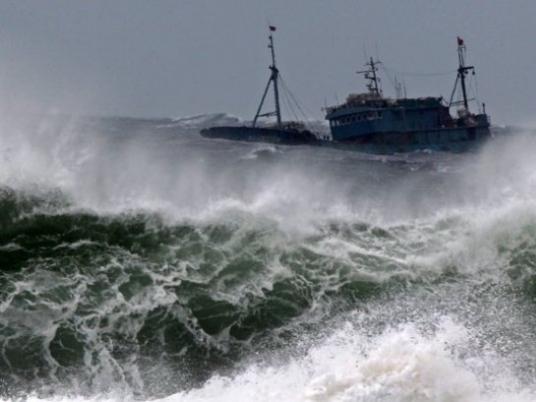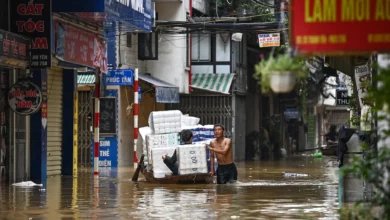
A powerful storm strengthened to a "super typhoon" on Sunday hours before it was set to slap the northeastern tip of the Philippines, prompting officials to warn of landslides and call on residents along the coast to evacuate to safer ground.
Typhoon Noul is now a category five storm, packing winds of up to 185 kph near the centre, with gusts of up to 220 kph, as it approaches the rice-producing province of Cagayan about 400 km north of the capital, Manila.
It was moving faster at 20 kph as it neared the Philippines' northeastern coast, where it was expected to make landfall later on Sunday, and was estimated at 100 km east of Tuguegarao City in Cagayan province.
"We strongly advise pre-emptive evacuation while we still have time, and we expect there will be a confluence of events – a high tide, heavy rainfall in the mountains, the possibility of a storm surge and strong winds," Alexander Pama, head of the national disaster agency, told a news briefing.
The typhoon was expected to trigger landslides, flashfloods, and storm surges of up to 2 metres in parts of the Cagayan Valley, the weather bureau said, adding that heavy to intense rainfall was likely within the typhoon's 150 km diameter.
The weather bureau said Noul was likely to hit land somewhere around the town of Santa Ana, in Cagayan Valley province, and may damage houses and topple trees.
The disaster agency said there could be landslides in at least 21 areas of Santa Ana and nearby Gonzalo town.
But British-based Tropical Storm Risk forecast the super typhoon would just miss Philippine provinces and veer north over the East China Sea towards Japan.
More than 5,000 passengers and about 100 vessels were stranded in various ports in the country as of Saturday, mostly along its eastern seaboard. Airline Cebu Pacific cancelled at least six domestic flights to the northern Philippines.
Officials in northern Philippine provinces have alerted rescue units and positioned relief goods. The government readied trucks to ferry people away from low-lying and flood-prone areas.
An average of 20 typhoons cross the Philippines each year, with the storms becoming fiercer in recent years. More than 8,000 people died or went missing and about a million were made homeless by Haiyan, a category 5 typhoon that struck the central Philippines in 2013, bringing 5-metre high storm surges.




